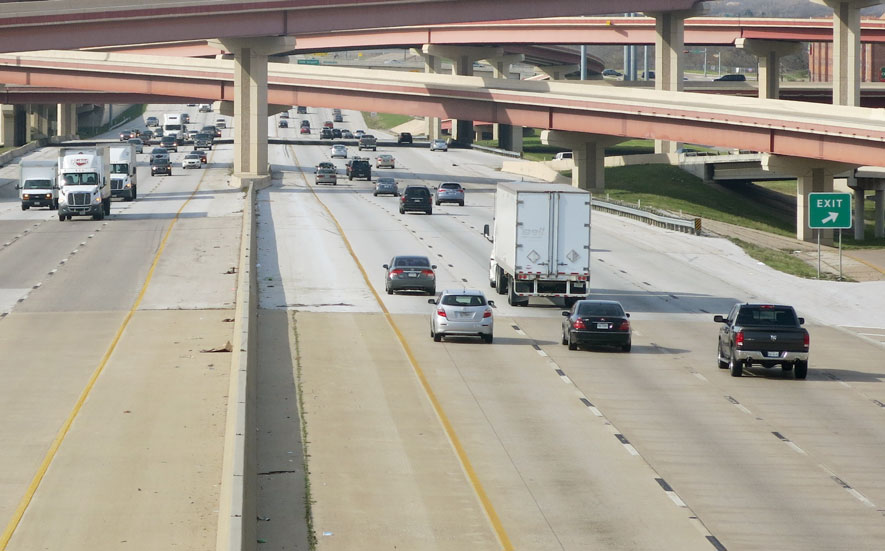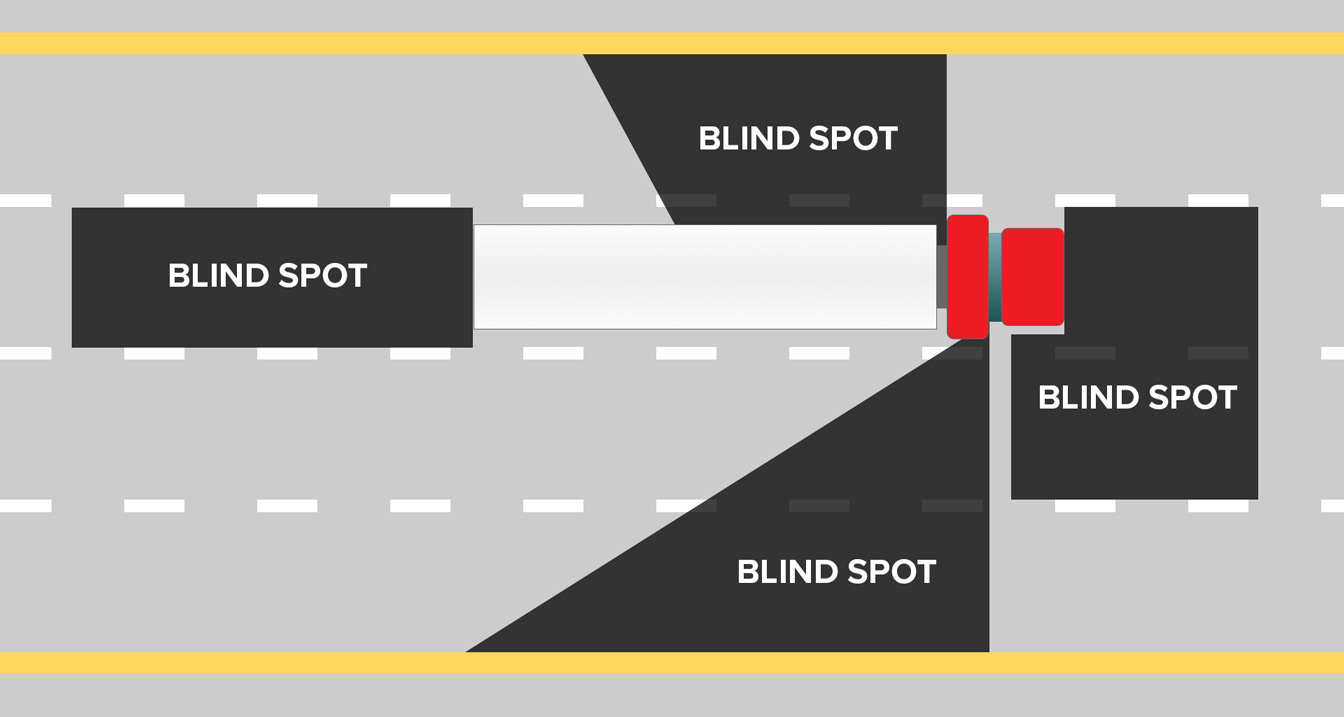How to Share Evansville Highways with Semi Trucks

Indiana is the “Crossroads of America,” according to our state motto. Evansville lives up to it. Anyone driving on US-41, US-66, US-62, or I-69 knows the abundance of semi trucks can clog traffic and intimidate even the most experienced interstate travelers.
Hoosiers are probably also familiar with truck accidents on these well-worn highways, which cause over 3,500 deaths each year. Fortunately, adopting a few safe driving techniques can drastically reduce your risk of being involved in one of these accidents.
1. Respect Semi Trucks’ Space

If you’ve ever loaded up a minivan for a family vacation, then driven hundreds of miles on sagging suspension, you know what it’s like to drive with heavy cargo that blocks your rear window. Trucks are no different: they have longer braking distances, are more susceptible to buffeting winds, and have large blind spots behind and on the sides of the vehicle.
To avoid a rear-end collision with a truck, remember to enter the lane far in front of them. A good rule of thumb is to wait until their grille is clearly visible in your rear-view mirror. In addition, when you’re driving in front of a semi truck, pay careful attention to traffic in front of you. Avoid braking suddenly and be proactive with maintaining a constant speed so the truck can follow safely.
The same precautions also apply when you’re behind a truck. Because you’re in their blind spot, truck drivers won’t know to take precaution when they brake or change lanes. Tailgating always increases your risk of getting in an accident, but is even more dangerous when you could not only run into but slide under the vehicle in front of you.
For these reasons, make sure to give trucks plenty of space on Indiana’s highways.
2. Avoid Blind Spots

Your family van has small blind spots on either side, but semi trucks’ blind spots are proportionally larger. If you notice in the diagram above, a truck’s passenger-side blind spot extends across two lanes of traffic and farther back than its driver-side one. This makes passing trucks in the right lane even trickier than passing them on the left.
Since many American trucks are manufactured with the engine in front of the cab (as opposed to cab-over trucks), Indiana drivers also need to watch out for the small blind spot directly in front of the vehicle. This is another reason to give trucks ample space when entering their lane.
Trucks’ rear blind spots can become your front blind spot if you drive too close to them. Rather than being able to see and anticipate traffic, you limit yourself to miniscule reaction times when you tailgate trucks on the highway. Stay safe by passing trucks when possible, and slowing down when you can’t.
3. Be Wary of Wide Turns

Trucks are notorious for their wide right turns. Even if it looks like you can sneak past as the truck swings wide during a turn, keep well behind it until it successfully completes the turn. Often, trucks will cross into other lanes to avoid entering oncoming traffic, and it’s hard to predict exactly when and where they will do this.
Also stay aware of trucks at intersections that are making a turn down the street you’re on. Help truck drivers make safe turns by stopping behind the white line at intersections or reversing when necessary and possible.
4. Pass Quickly

Though we don’t encourage you to race past trucks at 90 miles an hour, you should try to pass them quickly rather than block up traffic behind you. This also keeps you from lingering in blind spots and allows truck drivers to guess more accurately when you will enter and emerge from them.
If a truck tries to pass you, let it. In fact, slowing down further will allow the truck to pass you quickly and enter your lane at a safe distance.
Every once in a while, two trucks will get caught side-by-side on the highway. When this happens, don’t get frustrated. Some trucks have strictly set speed limits, and inclines can affect how fast they travel. One driver may have thought he could pass another truck and then started driving uphill. Semis are just as uncomfortable passing one another as you are, if not more so. Make sure to give both trucks plenty of space behind so you don’t pressure drivers unnecessarily.
In general, pass trucks on the left side, since their blind spot on the left is much smaller than the one on the right.
An Evansville Truck Accident Attorney for the Road Ahead
Even safe drivers make mistakes and get involved in accidents on Evansville’s many highways. If you’ve been injured in an accident involving a semi truck, Hensley Legal Group’s truck accident lawyers are here to help. Call or contact us online today for a free consultation with a qualified, compassionate attorney.